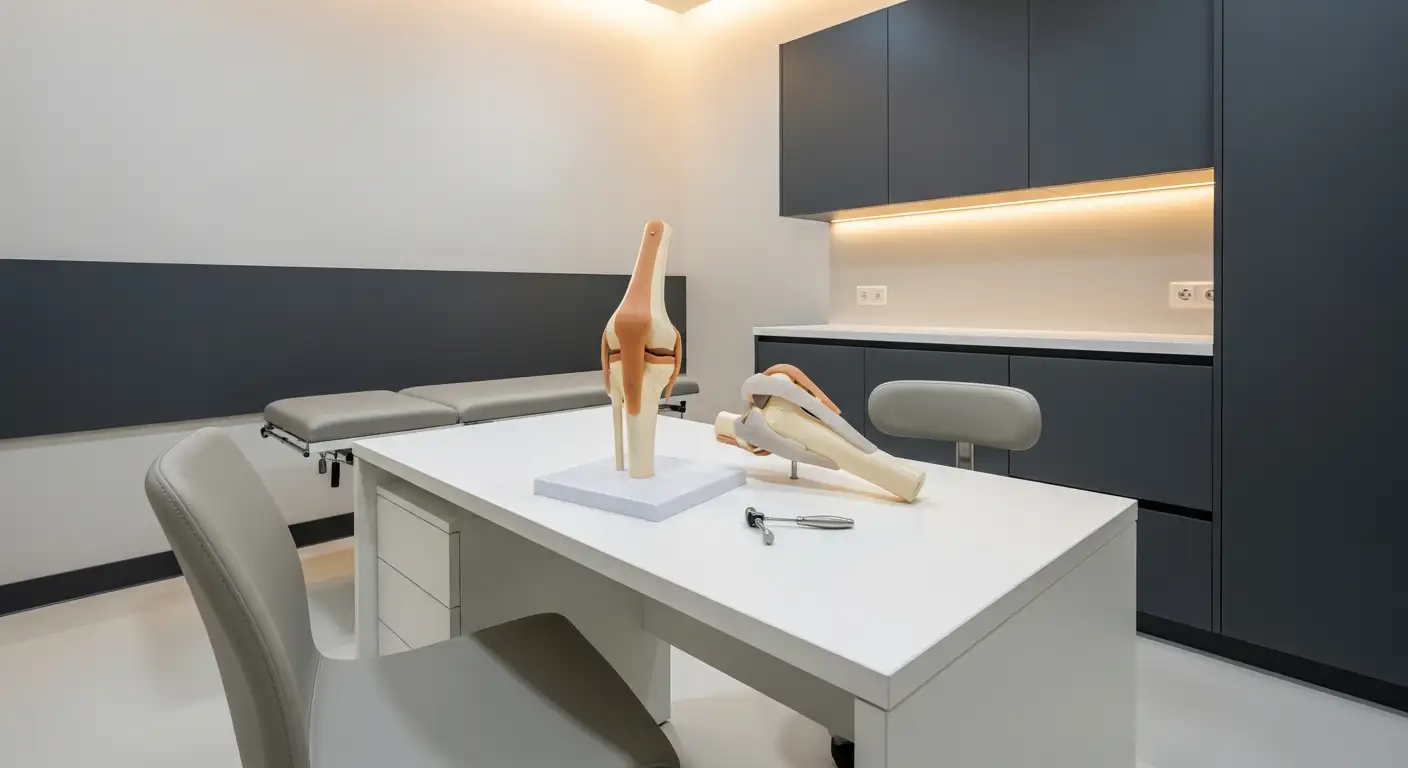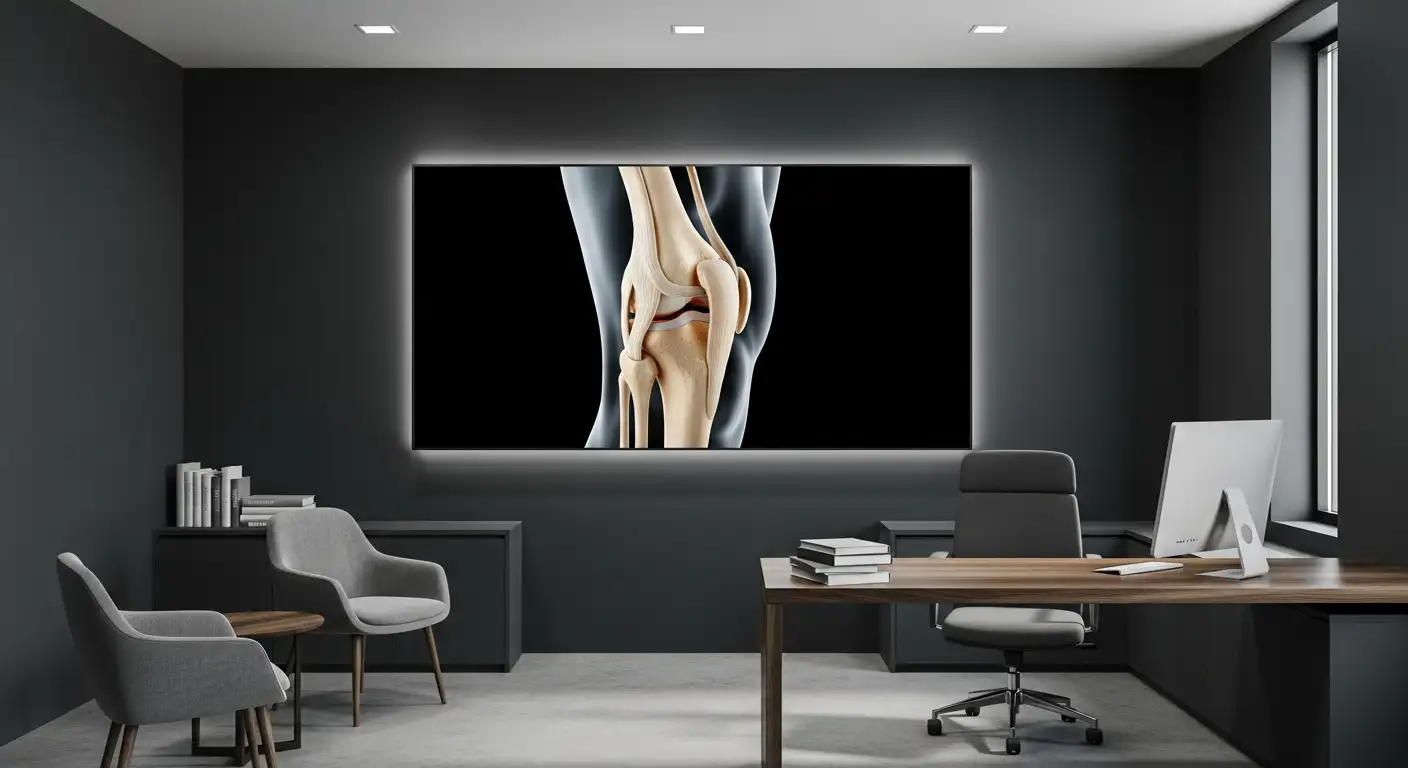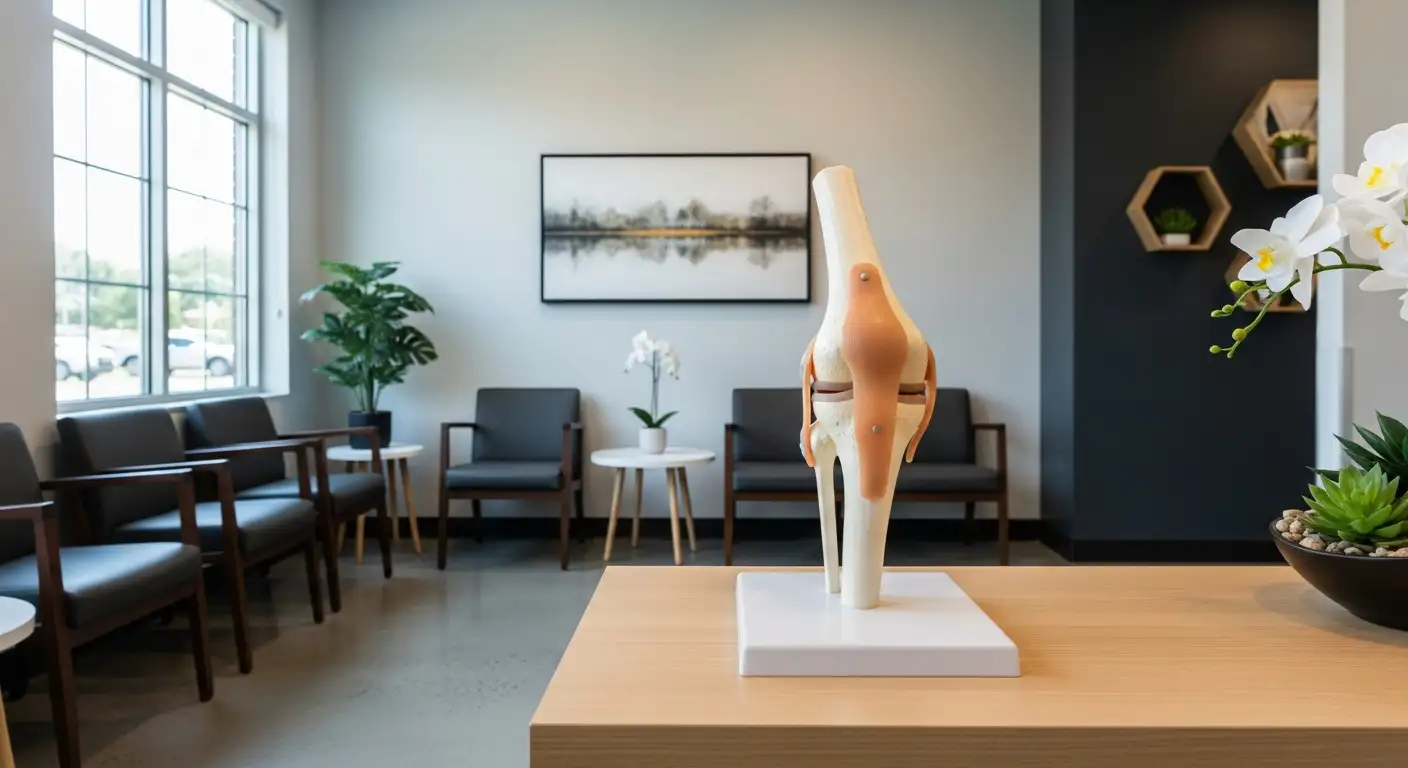Understanding Knee Pain in Squatting
When it comes to knee discomfort, squatting often comes under scrutiny. However, it's crucial to understand the relationship between squatting and knee pain, as well as the common causes of such discomfort.

Common Causes of Knee Pain
Knee pain when squatting can stem from a variety of sources. According to Knee Pain Explained, the ten most common causes include:
- Cartilage Tear
- Knee Bursitis
- Poor Technique
- Weak Glutes
- Runners Knee (Patellofemoral Syndrome)
- Chondromalacia Patella
- Patellar Tendonitis (Jumper's Knee)
- Iliotibial Band Syndrome (ITBS)
- Knee Arthritis
- Hamstring Injuries
These conditions range from muscle imbalances and technique errors to more chronic issues such as arthritis and cartilage damage. For instance, Patellofemoral Syndrome, also known as Runner's Knee, can result in knee pain during squats due to misalignment and movement issues associated with the kneecap. Similarly, Patellar Tendonitis, known as Jumper's Knee, can lead to knee pain while squatting due to inflammation and tears in the patellar tendon caused by constant force during physical activities like jumping or kicking.
Squatting and Knee Pain
While squatting is often associated with knee pain, it's rarely the primary cause. Instead, squatting often exacerbates underlying knee problems. For example, if one has a pre-existing condition like knee arthritis, the act of squatting could potentially increase discomfort due to the compressive forces applied to the knee joint.
However, it's important to note that squatting, when performed correctly and with proper guidance, can actually be an effective exercise for those with knee pain. It can help strengthen the muscles around the knee joint and potentially reduce pain levels.
Key to avoiding knee pain when squatting is ensuring correct movement patterns and technique. This includes avoiding excessive forward knee movement, maintaining proper hip hinging, and keeping the knees aligned with the toes.
Understanding the causes of knee pain and the relationship between squatting and knee discomfort paves the way for effective management strategies. These may include not only improving squatting technique but also addressing underlying physical factors, such as muscle imbalances and signs of wear and tear.
Physical Factors Behind Knee Pain
Squatting-related knee discomfort is frequently linked to physical factors such as muscle imbalances or the natural aging process. Understanding these factors can provide valuable insights for managing knee pain when squatting.
Role of Muscle Imbalance
Weak or imbalanced muscles around the knee joint, such as the quadriceps, hamstrings, or glutes, can contribute to knee pain when squatting [4]. These imbalances can throw off proper knee tracking and distribution of forces through the joint, placing unnecessary strain on the knee.
Strengthening the gluteal muscles, for instance, can help ensure proper knee alignment and mitigate pain during squats [2]. Regularly engaging in strengthening exercises and stretches targeting these muscle groups can help alleviate pain and improve knee health.
Impact of Age and Wear
The age-related wear and tear of the knee structures is another common physical factor behind knee pain when squatting. Knee arthritis, for example, is the most common cause of knee pain when squatting in people over the age of 60, due to wear and tear of the knee cartilage and bones.
Conditions such as osteoarthritis, patellofemoral syndrome (Runner's Knee), patellar tendonitis (Jumper's Knee), and meniscus tears can all contribute to knee pain during squats. These conditions can result from factors like constant force during physical activities, cartilage compression, and misalignment and movement issues associated with the kneecap.
It's important to note that while age and wear can contribute to knee pain when squatting, they don't necessarily mean one should avoid squatting entirely. On the contrary, when performed correctly and with proper guidance, squatting can be an effective exercise for strengthening the muscles around the knee joint and potentially reducing pain levels.
Whether the cause of knee pain is muscle imbalance, age, or wear, it's crucial to maintain proper squatting technique and seek professional guidance if necessary to prevent further discomfort or injury.
Importance of Proper Squatting Technique
Squats are a fundamental exercise that can help build strength and stability in the lower body. However, when done incorrectly, they can lead to or exacerbate knee pain. Understanding the consequences of poor squatting technique and how to improve your form can help you avoid knee pain when squatting.
Consequences of Poor Technique
Poor squatting technique, such as improper form or alignment, can place excessive stress on the knees, leading to pain during or after squats. Squatting is a functional move that aids in everyday activities and helps build strength in the legs and hips, leading to more stable joints. However, squatting incorrectly can cause pain in sore knees and often results in people bending over at the waist, which can lead to back pain [5].
Good technique is particularly important when using weights during squats, as holding weights can increase the forces on the knee [2]. Interestingly, a study using a gyroscope to measure the forces on the knee during squats found that the technique encouraged by many fitness professionals, which involves keeping the knees behind the toes, actually produced higher compressive forces on the knee joint compared with allowing the knees to travel beyond the toes.
Improving Squatting Form
The key to avoiding knee pain when squatting is to ensure correct movement patterns and technique. This includes avoiding excessive forward knee movement, maintaining proper hip hinging, and keeping the knees aligned with the toes.
Here are some tips to improve your squatting form:
- Align Knees and Toes: Make sure your knees are directly over your feet when you squat. Your knees should follow the direction of your toes throughout the entire squat.
- Hip Hinging: Initiate the movement by hinging at the hips, not the knees. This will help engage your glutes and hamstrings, reducing the strain on your knees.
- Avoid Excessive Forward Knee Movement: Try not to let your knees move too far forward past your toes. This can put unnecessary stress on your knee joints.
- Maintain a Neutral Spine: Keep your back straight and your chest up to maintain a neutral spine. This can help prevent stress on your lower back.
- Consult a Fitness Professional: If you're new to squats or have a history of knee pain, it might be worth consulting a fitness professional. They can provide personalized advice and guide you through proper squatting mechanics to prevent knee pain.
Improving your squatting technique can significantly reduce the risk of knee pain when squatting and help you gain the full benefits of this powerful exercise.
Role of Exercise in Managing Knee Pain
Engaging in the right kind of exercises can play a significant role in managing and alleviating knee pain when squatting. This typically involves a combination of strengthening exercises to build muscle support around the knee, and stretching and warm-up exercises to enhance flexibility and prepare the body for physical activity.
Strengthening Exercises
Weak or imbalanced muscles around the knee joint, such as the quadriceps, hamstrings, or glutes, can contribute to knee pain when squatting. By strengthening these muscle groups, you can improve joint stability and reduce strain on the knee joints, which can help alleviate pain.
One such exercise is to focus on strengthening the gluteal muscles. A strong gluteal group can ensure proper knee tracking and distribution of forces through the joint, thereby reducing knee pain when squatting [2].

Stretching and Warm-Up
Performing gentle stretches and range of motion exercises for the knee joint can help improve flexibility and reduce knee pain when squatting. Exercises such as leg raises, hamstring stretches, or calf stretches are particularly beneficial.
Additionally, warm-up exercises that focus on dynamic stretching, mobility, and activation of the muscles used during squats can prepare the body for activity, reducing the risk of knee pain. Performing these warm-up routines before squatting can improve movement patterns and reduce discomfort in the knees.

By incorporating these strengthening, stretching, and warm-up exercises into your routine, you can significantly improve your squatting technique and help to manage and alleviate knee pain when squatting. Regular exercise, coupled with proper form and technique, can make a significant difference in the overall health and functionality of your knees.
Professional Guidance for Knee Pain
While self-care measures can aid in managing knee pain when squatting, it's crucial to seek professional advice to ensure safe and effective strategies. This section explores the importance of expert consultations and the role of physical therapy in addressing this issue.
Importance of Expert Consultation
It is important for people experiencing regular knee pain when squatting to consult a healthcare professional such as a doctor, physical therapist, or certified fitness professional. This can help determine the cause of the pain and provide proper guidance for its management [6].
In severe cases of knee pain during squats, especially if accompanied by swelling, instability, or locking of the knee joint, it's crucial to seek medical attention. This can help rule out serious injuries or conditions that may require specific treatments or interventions.
Role of Physical Therapy
Physical therapy plays a vital role in managing knee pain associated with squats. A physical therapist can assess movement patterns, identify weaknesses, and create an individualized exercise program. This can help improve knee function and reduce pain during squats.
Individuals experiencing knee pain during squats may also benefit from seeking guidance from a movement specialist. They can assess movement patterns, identify areas of weakness or instability, and provide personalized recommendations for improvement [3].
It's essential to listen to your body and modify your squatting technique or range of motion if you experience knee pain. Gradually building strength, flexibility, and proper movement patterns under the supervision of a professional can help individuals progress towards pain-free squats and overall improved knee health [3].
In all, professional guidance can ensure that you are performing squats correctly and safely, helping to prevent further knee pain and potential injury. It can also provide you with the tools and knowledge you need to take care of your knees and improve your overall physical health.
Lifestyle Adjustments for Pain Management
While knee pain when squatting can be challenging to manage, certain lifestyle adjustments can help alleviate discomfort and improve the overall quality of life. These include modifying activities and incorporating regular exercise into the daily routine.
Activity Modification
One effective way to manage knee pain when squatting is by modifying how activities are performed. For instance, when reaching for items on the floor, instead of squatting, individuals can use a chair in front of the cabinet. This modification allows reaching the floor from a seated position, which is less strenuous on the knees.
Patients suffering from patellofemoral pain syndrome (PFPS) should focus on activity modification by reducing running volume, avoiding sudden increases in mileage, and incorporating stretching and strengthening exercises for muscles like the hip abductors, quadriceps, hamstrings, and core muscles. As such, activity modification is a vital component in managing knee pain associated with squatting.
Importance of Regular Exercise
In addition to modifying activities, regular exercise plays a crucial role in managing knee pain when squatting. Squatting, if done correctly, is generally well-tolerated by individuals with knee osteoarthritis as they build strength in the thigh, buttocks, and core muscles.
One exercise recommended for strengthening these muscles is the wall squat. Starting with 10 wall squats three times a week can help strengthen the necessary muscles, improving the ability to squat without discomfort for individuals with knee osteoarthritis.
To mitigate the risk of running-related knee injuries, Dr. Jong recommends incorporating strength training exercises like squats, lunges, step-ups, and step-downs into the fitness routine. This can improve resistance to injury and enhance running economy and performance.
In conclusion, managing knee pain when squatting involves a combination of activity modification and regular exercise. By making these adjustments, individuals can continue to engage in physical activities and maintain their fitness levels while effectively managing knee pain.
References
[1]: https://www.physiotattva.com/blog/what-causes-knee-pain-when-squatting
[2]: https://www.knee-pain-explained.com/knee-pain-when-squatting.html
[3]: https://movementsolutions-sc.com/knee/squats-for-knee-pain
[4]: https://www.medicalnewstoday.com/articles/stretches-for-knee-pain
[5]: https://www.arthritis.org/health-wellness/healthy-living/managing-pain/joint-protection/how-to-squat-correctly
[6]: https://www.medicalnewstoday.com/articles/325246
[7]: https://www.hingehealth.com/resources/articles/knee-pain-when-squatting/
[8]: https://nuhsplus.edu.sg/article/running-the-risk-of-knee-injuries-is-it-worth-it





